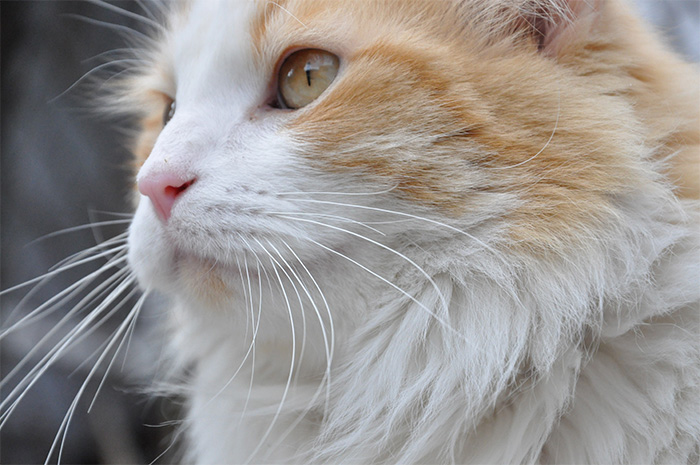Many cat lovers are drawn to the extraordinary beauty of long-haired cats. This is not surprising as long-haired cats are magnificent to look at and luxurious to the touch especially when their fur coat are well-maintained.
And therein lies the rub. Long-haired cats require more upkeep than their standard-haired counterparts in keeping their fur as healthy as possible – lustrous, luxurious and groomed. While these cats are also fastidious by nature, thanks to their regular self-grooming habits, you must lend a helping hand, too.
Fortunately, there’s no need to lose your own hair in keeping your long-haired cats’ coats as healthy as possible. You can adopt the following measures for at-home care in addition to regular professional grooming sessions.
Frequency of Grooming
Ask your pet’s veterinarian or professional groomer about the frequency of grooming sessions for your long-haired cat. Each cat will have specific grooming needs depending on several factors including:
- Type and texture of fur, which will largely depend on the breed (e.g., Persian cat, ragdoll, or British long-haired cat)
- Age
- Physical condition and health status
- Lifestyle
In general, the softer and silkier a long-haired cat’s fur, the more maintenance it requires. You should observe the behavior of the coat – if it becomes easily tangled or matted, then more frequent brushing sessions is a must for a well-groomed coat.
Older cats will likely require more human intervention for two reasons – lose of interest in self-grooming and onset of age-related cognitive decline known as cat dementia. Overweight cats will also require more human-initiated grooming because of their inability to reach the back half of their bodies. Be sure to pay special attention to the area under the tail where bits of feces and litter can stick to the hair.
Persian and Himalayan cats, among other brachycephalic breeds (i.e., pushed in faces), should have the area around their eyes cleaned. This is necessary to prevent tear staining and bacterial infections in the skin’s folds.
You may have to spend 15-30 minutes each day or each month, depending on your cat’s breed, combing and brushing its long hair. But since grooming sessions can make your cat feel and look good, you may want to brush it on a daily basis.
Frequency of Bathing
Contrary to popular notion, cats can be taught to love baths with the proper training and tools. Long-haired cats occasionally require baths since their coats can become sticky or greasy even with regular grooming sessions, not to mention the accumulated poop underneath the tail in overweight and elderly cats.
Feline experts recommend teaching kittens the joys of bathing as soon as the vet recommends it. When young, cats are more likely to accept bathing without so much as a fuss once they are older. Bath time becomes more challenging when a older cat has not put so much as paw in a sink of water.
- When bathing a kitten for the first time, it is best to take it one step at a time. Keep these tips in mind, too, for a more enjoyable bath time.
- Schedule your cat’s baths when it is at its most relaxed state. Play with your cat or give it a favorite toy.
- Trim your cat’s claws before bathing to lessen your risks for scratches.
- Brush your cat’s hair as thoroughly as possible to remove matted and loose hair. Place cotton balls in its ears to keep the water out of its ear canal.
- Place a rubber mat on the sink where your cat will be given its bath. Fill the sink with a sufficient amount of lukewarm water, usually 3 to 4 inches.
- Using a handheld spray hose, thoroughly spray the cat with water but be careful not to spray directly into its ears, eyes and nose. Use a pitcher in case a handheld spray hose is unavailable.
- Gently massage your cat’s coat with cat shampoo bought from an online pet supply store, such as PetSmart. Be sure to dilute the cat shampoo with water (i.e., 1:5). Lather the solution starting from the head and ending at the tail but be sure to work in the direction of the hair growth.
- Rinse off the cat shampoo with lukewarm water. All residues should be removed since leftovers can irritate the skin and attract dirt into the fur.
- Carefully wipe your cat’s face with a wet washcloth but be careful about washing around the ears and eyes.
- Wrap your cat in a dry, clean and large towel. Dry your pet as much as possible and then follow with a blow dryer with the lowest heat setting. Comb your cat’s hair with a wide-toothed comb.
And voila! Your long-haired cat has a lustrous coat that will become the envy of others. Professional grooming is also recommended especially when your long-haired cat requires a makeover, which will make it ready for shows and competitions.


